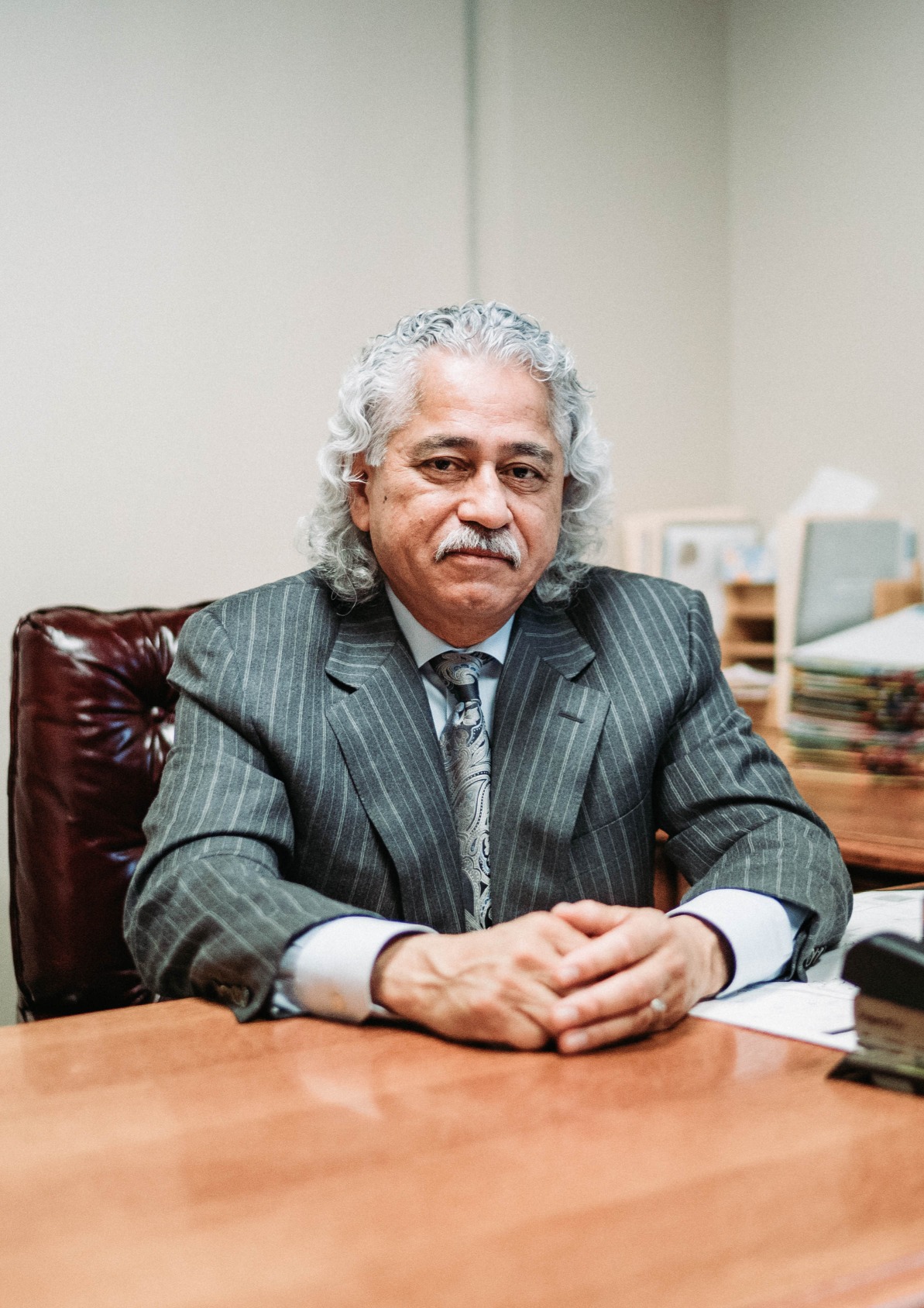Dr. Robert G. Salazar
Dr. Salazar was born and raised in Corcoran, California. He is the sixth of eight children born in a Spanish-speaking farmworker family. This instilled work ethic at an early age. He graduated from Stanford with a degree in Human Biology and received his Doctorate of Medicine from the University of Southern California in 1979.
The following year, Dr. Salazar completed an internship at Los Angeles County – USC Medical Center in Internal Medicine. Between 1980 and 1982, he completed a residency in Anesthesiology at the University of California, San Francisco . Dr. Salazar then accepted one of five fellowship positions offered by the Virginia Mason Clinic (Seattle, Washington) in 1982. He completed his additional training in regional anesthesia/pain in 1983.
He returned to the University of California San Francisco in 1983, accepting the position of Clinical Director of the primordial pain clinic. He remained Assistant Clinical Professor of Anesthesia until 1987 when he moved to Tucson, Arizona. Dr. Salazar was in private practice as an anesthesiologist in a busy Level I trauma center until 1993. During that time, he also was involved in two outpatient pain clinics. Sister Ruth Marie Nickerson (past CEO of Saint Agnes Hospital) recruited Dr. Salazar back to the San Joaquin Valley in 1993. He established the Saint Agnes Pain Clinic and spearheaded pain management innovations at Saint Agnes.

In 2000, Dr. Salazar , Dr. Clague, Dr. Williams and Dr. Kalamkarian built a 12,000 sq. foot building at 7152 N. Sharon Avenue, which included a 4,000 sq. foot state of the art outpatient Medicare-certified surgical center. Dr. Salazar is currently the major owner. In 2011, Dr. Kalamkarian “retired,” and Dr. Salazar acquired his large established practice. Currently, Dr. Salazar has approximately 20,000 patient contacts per year and his practice continues to grow.
Education
Robert G. Salazar, M.D. was the second Mexican-American high school senior to receive the coveted Col. J. G. Boswell Scholarship. This propelled him to Stanford where he received a bachelor’s degree in 1975.
-
B.A., Stanford University, Palo Alto, California 1975
-
M.D., University of Southern California, Los Angeles,California 1979
-
Internship, Medicine, Los Angeles County Medical Center, Los Angeles, California 1979-1980
-
Residency, Anesthesia, University of California, San Francisco 1980-1982
-
Fellowship, Regional Anesthesia, Virginia Mason Clinic, Seattle, Washington 1982-1983
Certification
-
Diplomate, American Board of Anesthesiology Diplomate, 1985
-
American Academy of Pain Management 1986
Licensure:
California
Teaching
University of California, San Francisco
Approx 1,400 per:
Anesthesia 110Clinical Clerkship in Anesthesia
Anesthesia 140.01Clinical Anesthesia Elective
Anesthesia 178Anesthesiology
Anesthesia 400Anesthesia Staff Conference
Anesthesia 450Anesthesia Clinical Work
-
Two full days per week teaching clinical anesthesia. On-call teaching related to emergencies approximately for weeknights and one weekend per 1.5 months. All clinical anesthesia is administered by postdoctoral trainees; therefore, all faculty clinical activities in the operating room involve one-on-one teaching.
-
Weekly participation in departmental Morbidity and Mortality Conference and research conferences.
-
Lectures for first-and second-year residents’ seminar in anesthesia.
-
Supervision and instructional research fellow in pain management: David Irwin, M.D. 1985-1986
-
Pain Clinic director, chief responsibility for all inpatient and outpatient consultations regarding acute or chronic pain, requiring two days per week clinical duty.
-
Instructor in Advance Cardiopulmonary Resuscitation.
-
Instructor in Basic Cardiopulmonary Resuscitation.
-
One of three anesthesia faculty responsible for Moffit-Long operating room schedule.
University and public service:
University of California Positions:
University of California, San Francisco Assistant Clinical Professor 1983-1986
Intramural
-
Department of Anesthesia, Promotions Committee School of Medicine, 1985-1986
-
Clinical Faculty Management Committee 1984-1985
-
MoffittI / Long Hospitals 1984-1995
-
Operating Room Surgery Committee 1985-1986
-
Regional AnesthesiaJPain Rotation Subcommittee Epidural Morphine Committee 1985-1986
Professional Activities
Post Universal Professional Activity:
-
Anesthesiologist and Pain Consultant, Old Pueblo Anesthesia, Tucson, Arizona 11/86 – 11/93
-
Anesthesiologist and Pain Consultant, General Partner, Anesthesia Consultants of Fresno, Fresno, California 11/93 – 06/07
-
Director, St. Agnes Medical Center Pain Management Center, Fresno, California 11/93 – 12/98
-
Medical Director, Comprehensive Pain Management Center, Fresno, California 2001 – Present
-
Qualified Medical Examiner State of California 2001 – Present
-
Agreed Medical Examiner State of California 2001 – Present
-
Independent Medical Examiner State of California 2006 – Present
Professional Activities
Professional Societies:
- American Society of Anesthesiologists International Association for the Study of Pain American Academy of Pain Management
Bibliography
Book Chapter:
- Salazar, R.G. Anesthesia, Handbook of Surgery eighth edition Schrock, T.R. ed. Greenbrae, CA: Jones Medical Publications, 1984, pp 121-139.
Misc.
-
Salazar, R.G. Comparative Evaluation of Varying Degrees of Hypobaric Tetracaine in Total Hip Arthroplasties (not published).
-
Salazar, R.G. Celiac Plexus Alcohol Block for Upper Abdominal Cancer Pain West J. Med, pp 140-141, Epitomes in Anesthesia.
-
Salazar, R.G: Severe Hemorrhage After Extracorporeal Shock-Wave Lithotripsy Annals of Internal Medicine, vol. 111 :612-613, 1989.

